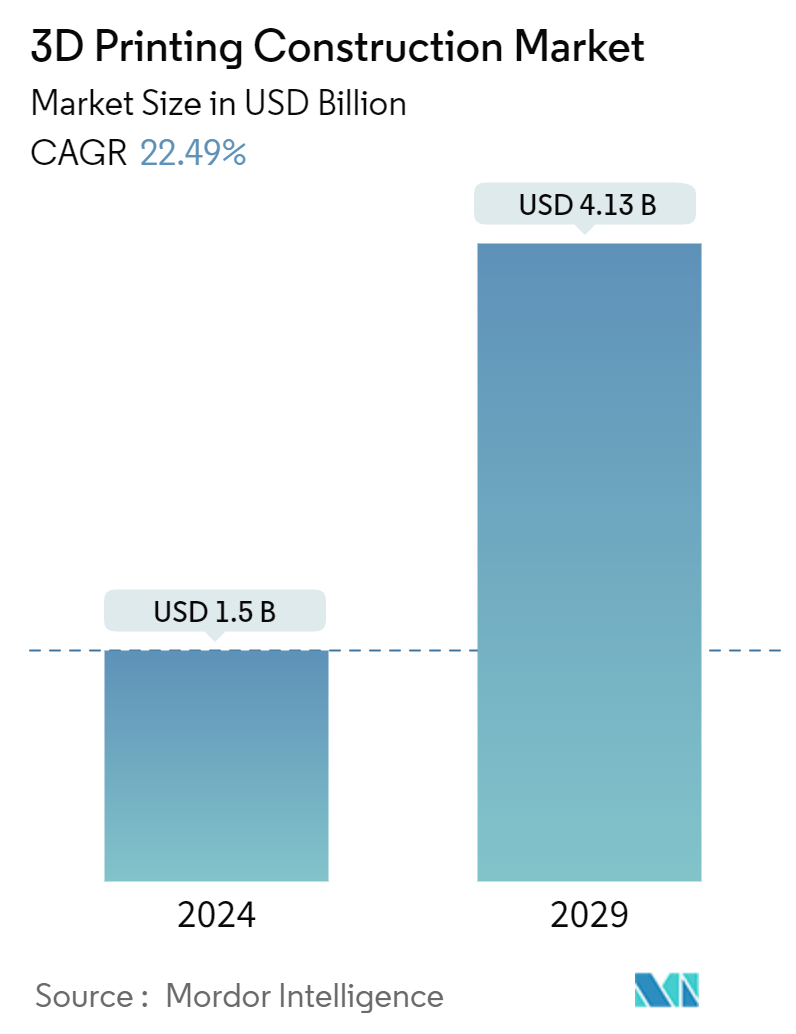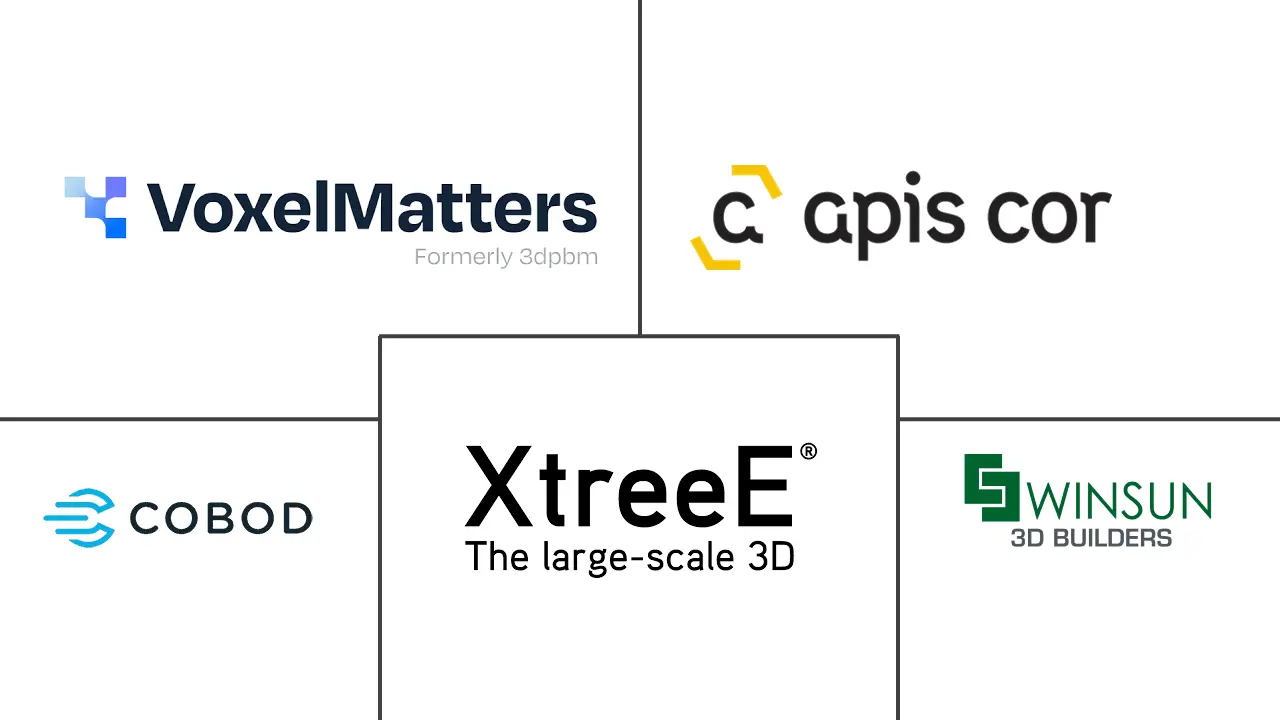Market Size of 3D Printing Construction Industry

| Study Period | 2019 - 2029 |
| Market Size (2024) | USD 1.5 Billion |
| Market Size (2029) | USD 4.13 Billion |
| CAGR (2024 - 2029) | 22.49 % |
| Fastest Growing Market | Europe |
| Largest Market | North America |
Major Players
*Disclaimer: Major Players sorted in no particular order |
3D Printing Construction Market Analysis
The 3D Printing Construction Market size is estimated at USD 1.5 billion in 2024, and is expected to reach USD 4.13 billion by 2029, growing at a CAGR of 22.49% during the forecast period (2024-2029).
The 3D printing construction market is an emerging and swiftly expanding construction industry segment, harnessing 3D printing technology to erect structures. This technology utilizes printers to deposit materials sequentially, crafting three-dimensional objects or edifices. Despite its infancy, 3D construction printing has already made significant strides.
- Utilizing the additive manufacturing process, the constructed components boast high precision and customization, achieved rapidly and with minimal waste. This technology is predominantly employed to erect intricate building designs via modeling software. Adopting 3D printing technology brings benefits like heightened accuracy, enhanced efficiency, reduced labor costs, and accelerated construction speed.
- The global housing crisis underscores the demand for affordable and swiftly built homes. In response, the construction industry is evolving, with 3D printing streamlining and expediting the building process, often through robotic solutions that extrude concrete. According to COBOD International, in residential housing, which has garnered the most attention, 3D construction printing (3DCP) can potentially cut up to 45% of the total building cost. However, certain expenses remain unaddressed by this technology, including finishing touches, windows, doors, and concealed elements like mechanical, electrical, or plumbing components.
- Over the past five years, the adoption of 3D construction printing has surged, not just in the volume of buildings produced but also in the diversity of structures. For instance, COBOD's machines, in collaboration with partners like PERI Group, have successfully printed one- to three-story buildings spanning up to 4,100 ft². Their portfolio includes schools built by Holcim/14 Trees, 30 ft wind turbine tower bases for GE Renewable Energy, and many other structures across six continents.
- Furthermore, the global shift towards green projects significantly propels market growth. The construction sector is notorious for its substantial waste generation, and the journey towards sustainability has been sluggish. Given the intricate supply chains in construction, green management efforts have seen limited success. With construction projects often involving thousands of companies, ensuring a consistent, sustainable approach throughout the supply chain becomes a daunting challenge. Disruptive technologies like 3D printing promise to revolutionize product design and manufacturing, potentially reshaping the entire supply chain structure.
- However, constraints related to materials, machinery limitations, and intellectual property rights concerns could hinder market growth. A notable shortage of skilled labor also poses a significant hurdle to the market's expansion.

